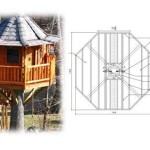Essential Aspects of Property Drainage Plans
Property drainage plans are crucial for managing water flow and preventing water damage to your home and landscape. Here are some essential aspects to consider when creating a drainage plan.
1. Site Assessment
The first step in creating a drainage plan is to assess your property's topography, soil conditions, and existing drainage systems. This assessment will help identify potential drainage problems and determine the best solutions.
2. Drainage System Design
Based on the site assessment, a drainage system design can be created. This design should include the location of drains, pipes, and other components, as well as the slope and depth of the system.
3. Drainage Pipe Selection
The type of drainage pipe used will depend on the size and flow rate of the drainage system. Common pipe materials include PVC, HDPE, and corrugated metal.
4. Drainage Basin Design
Drainage basins are areas that collect water and direct it to the drainage system. The design of the drainage basins should consider the size of the contributing area, the slope, and the soil conditions.
5. Erosion Control Measures
Erosion control measures are important for preventing soil erosion, which can damage drainage systems and lead to flooding. Common erosion control measures include vegetation, riprap, and gabions.
6. Maintenance Plan
Once a drainage system is installed, it is important to maintain it regularly. This includes cleaning out drains, repairing damaged pipes, and clearing away debris that can block the system.
7. Legal Considerations
In some cases, property drainage plans may require approval from local authorities. It is important to check with your local municipality to determine if any permits or approvals are required before installing a drainage system.
Conclusion
Property drainage plans are essential for protecting your home and landscape from water damage. By considering the essential aspects discussed above, you can create a drainage plan that effectively manages water flow and prevents problems.

Residential Drainage Life Of An Architect

House Drainage Important Components Used In System
Drainage Plans For Your Property Christchurch City Council

Drainage Layout Responsibility Lanes For Drains

How To Obtain Before You Dig Plans

Split Site Grading And Drainage Plan Scientific Diagram

How Do I Find Where The Drains Are On My Property Drain Detectives

Creating A Site Plan Sketch Akvopedia

Where Can I Find Drainage Plans For My House Soho Real Estate

Sewerage Scheme Shire Of Moora








